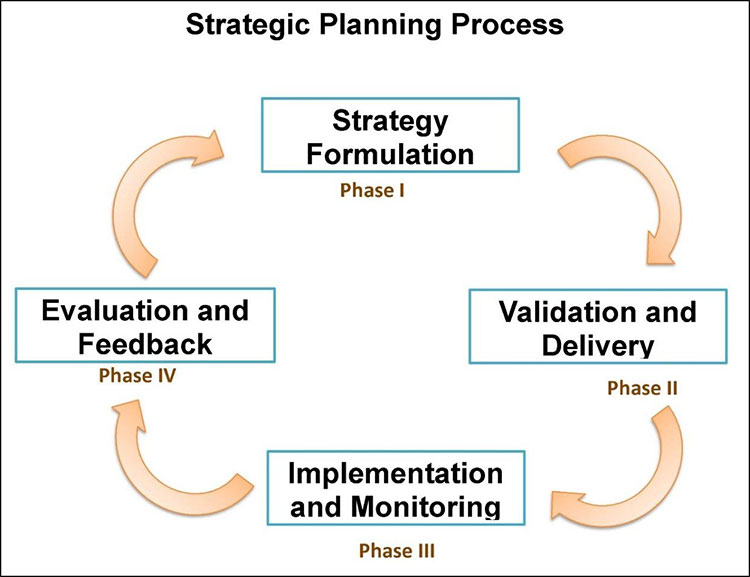جامعة الأمير سلطان
نظام إدارة السياسات
سياسة التخطيط الاستراتيجي
| رمز السياسة: | GV0002 |
| عنوان السياسة: | سياسة التخطيط الاستراتيجي |
| صاحب السياسة: | عمادة ضمان الجودة والتطوير (DQAD) |
| المكتب / الإدارة المسؤولة: | مكتب رئيس الجامعة |
| معتمد من: | مجلس الجامعة |
| المراجعة الأخيرة: | 26/9/2023 |
| تاريخ النفاذ: | 2/2/2017 |
نظرة عامة
تهدف هذه السياسة إلى توجيه عملية التخطيط الاستراتيجي بجامعة الأمير سلطان من خلال مواءمة الأهداف والمحاور والمبادرات مع رسالة الجامعة ورؤيتها. وتعتمد الجامعة على منهجية الأهداف والنتائج الرئيسية (OKR) لتنفيذ المبادرات بكفاءة ومرونة، مع ضمان استخدام الموارد بفعالية لتحقيق النجاح المؤسسي المستدام على المدى الطويل.
التعريف
التخطيط الاستراتيجي: عملية منهجية لتحليل البيئة الداخلية والخارجية وتحديد أهداف قابلة للقياس في المجالات الأكاديمية والبحثية والمجتمعية، ثم تخصيص الموارد لتنفيذها.
أصحاب العلاقة: يشملون فرق العمل والمراجعة، والإدارة العليا، ومجلس الأمناء.
تحليل SWOT: تحليل نقاط القوة والضعف والفرص والتهديدات.
خطة التنفيذ: مجموعة من الخطوات لتحقيق أهداف الخطة.
البيئة الداخلية: الطلبة، أعضاء هيئة التدريس، الموظفون، الإدارة الوسطى والعليا، مجلس الأمناء.
البيئة الخارجية: الخريجون، أصحاب العمل، والمؤثرون خارج الجامعة.
الأولويات: القيم الاستراتيجية التي توجه الجامعة نحو أهدافها.
برنامج OKR: أداة لقياس التقدم في تحقيق الأهداف والنتائج الرئيسية.
حملة التوعية: حملة إعلامية لإبلاغ أصحاب العلاقة ببدء دورة التخطيط.
السياسة والإجراءات
-
المسؤوليات
- المساهمة من جميع أصحاب العلاقة في إعداد الخطة الاستراتيجية.
- مجلس الأمناء يعتمد الخطة ويراقب تنفيذها.
- رئيس الجامعة يقود العملية بأكملها.
- نائب الرئيس للشؤون المالية يضمن توافق الخطة مع الموارد المالية.
- القيادات الأكاديمية والإدارية مسؤولة عن تنفيذ الأهداف في وحداتهم.
-
مراحل تنفيذ الخطة
- صياغة الاستراتيجية: تحليل البيئة الداخلية والخارجية.
- التحقق والتسليم: إعداد الوثيقة وتقديمها لأصحاب العلاقة.
- التنفيذ والمراقبة: تنفيذ الخطة ومتابعة الأداء.
- التقييم والتغذية الراجعة: قياس النجاح وتحديد التحسينات.
-
خطوات عملية التخطيط الاستراتيجي
- تشكيل فرق عمل ولجان إشرافية.
- اعتماد الخطة الأولية من الإدارة العليا.
- تحديد الالتزامات والتوجهات المؤسسية.
- إعداد الأدلة والإرشادات والنماذج.
- إشراك أصحاب العلاقة وتحديد طرق التواصل معهم.
- إطلاق حملة توعية وورش عمل.
- جمع التغذية الراجعة من خلال مجموعات نقاش واستبيانات.
- مراجعة رسالة الجامعة وصياغة الرؤية.
- إجراء تحليل SWOT.
- تحديد القضايا والأولويات الاستراتيجية.
- صياغة الأهداف والاستراتيجيات وفق محاور رئيسية.
- مراجعة الخطة من جميع أصحاب العلاقة لضمان الالتزام.
- صياغة الرؤية النهائية للمستقبل.
- وضع خطة تنفيذية لتطبيق الاستراتيجية.
- إعادة تقييم العمليات والاستراتيجيات بشكل دوري.

